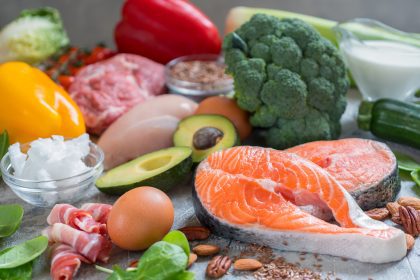Bloating affects countless women as they navigate the complex terrain of aging, especially during perimenopause when hormonal fluctuations become increasingly unpredictable. The sensation of abdominal tightness or fullness can range from mildly uncomfortable to severely distressing, often causing the stomach to appear visibly distended. This common yet frequently misunderstood condition deserves closer examination, particularly as it intersects with the natural aging process and hormonal transitions that define midlife for many women.
The physical experience of bloating extends beyond mere discomfort. For many, it creates both physical limitations and emotional distress, sometimes triggering body image concerns or anxiety about underlying health conditions. The temporary nature of most bloating episodes offers reassurance, yet the recurring pattern many women experience can significantly impact quality of life, affecting everything from clothing choices to social engagement and physical activity levels.
Root causes: Understanding the bloating triggers
Intestinal gas represents one of the most common culprits behind bloating, typically resulting from the normal breakdown of food during digestion. This natural process can become more pronounced depending on gut microbiome health, digestive enzyme efficiency, and individual food sensitivities.
Hormonal fluctuations play a particularly significant role for women, especially during perimenopause when estrogen and progesterone levels begin changing unpredictably. These hormonal shifts directly impact water retention, intestinal motility, and even the body’s inflammatory response, all factors that contribute to bloating. As women move through midlife, these hormonal variables become increasingly relevant to digestive comfort and bloating frequency.
Constipation presents another common bloating trigger, creating a backup in the digestive system that leads to increased gas production and abdominal distension. This condition becomes more prevalent with age as natural changes in digestive efficiency, medication side effects, and decreased physical activity create the perfect environment for irregular bowel movements.
Dietary choices significantly influence bloating susceptibility, with certain foods consistently emerging as common triggers. Understanding individual food sensitivities represents a crucial step toward minimizing bloating episodes. While temporary bloating related to hormonal changes or dietary indiscretions typically resolves within hours or days, persistent bloating accompanied by other symptoms warrants medical evaluation to rule out underlying health conditions.
Bloating versus belly fat: Critical distinctions
The distinction between bloating and belly fat represents a crucial understanding for effective body management. Bloating manifests as a temporary condition characterized by abdominal distension that fluctuates throughout the day or week. In contrast, belly fat represents a more permanent accumulation of adipose tissue around the abdomen, developing gradually over time rather than appearing suddenly.
The physical sensation provides one clear differentiator – bloating typically feels tight and uncomfortable, often accompanied by pressure or even pain. Belly fat, conversely, feels soft and pliable to the touch, rarely causing physical discomfort unless it contributes to other health issues.
Visual differences further clarify the distinction. Bloating primarily affects the stomach area, creating a distended appearance that can change dramatically within hours or days. Weight gain resulting in increased belly fat typically coincides with changes in other body areas, developing gradually and maintaining relative consistency day-to-day. Recognizing these differences enables more effective self-assessment and appropriate action planning for midlife body changes.
Dietary culprits: Foods that promote bloating
Cruciferous vegetables like broccoli, cabbage, and cauliflower contain complex sugars called raffinose that the human digestive system cannot fully break down. While these vegetables offer tremendous nutritional benefits, their fermentation in the intestines creates gas that leads to bloating.
Garlic and onions, despite their impressive health benefits, contain high levels of fructans that many people cannot fully digest. These compounds ferment in the large intestine, producing gas and bloating in susceptible individuals. Many women notice increased sensitivity to these foods during perimenopause as digestive efficiency naturally decreases.
Carbonated beverages introduce gas directly into the digestive system, contributing immediately to bloating sensations. The combination of carbonation with sugar or artificial sweeteners in many of these drinks can further exacerbate digestive distress through fermentation processes in the intestines.
Dairy products contain lactose, a sugar that requires the enzyme lactase for proper digestion. Many adults experience declining lactase production with age, leading to increased bloating after consuming dairy foods. This sensitivity often becomes more pronounced during midlife hormonal transitions.
Apples, while nutritionally valuable, combine fructose and fiber in ways that can lead to significant intestinal fermentation and gas production. This combination proves particularly challenging for sensitive digestive systems, creating bloating even when consumed in modest quantities.
Preventive strategies: Minimizing bloating occurrence
Food sensitivity testing offers a systematic approach to identifying personal bloating triggers. These tests can reveal specific intolerances that might otherwise go undetected, allowing for targeted dietary modifications that dramatically reduce bloating episodes. This approach becomes especially valuable during midlife when digestive patterns often shift.
Mindful eating practices significantly impact digestion quality. Eating slowly, chewing thoroughly, and limiting distractions during meals reduces air swallowing and improves initial digestive processes. These simple habits become increasingly important as natural digestive efficiency diminishes with age.
Limiting fatty food consumption helps prevent bloating by promoting more efficient digestion. High-fat meals slow gastric emptying and intestinal transit, prolonging the digestive process and increasing fermentation opportunities that lead to gas production. This effect becomes more pronounced during perimenopause when hormonal fluctuations already impact digestive function.
Gentle physical activity after meals stimulates digestive processes and helps move gas through the intestinal tract. Even a brief, leisurely walk can significantly reduce post-meal bloating discomfort. Regular movement patterns support overall digestive health during midlife transitions.
Rescue remedies: Addressing active bloating
Probiotic supplementation helps establish and maintain healthy gut microbiome balance, potentially reducing bloating frequency and severity over time. These beneficial bacteria assist with proper food breakdown and prevent opportunistic gas-producing microbes from dominating the intestinal environment. This support becomes increasingly valuable during hormonal transitions that can disrupt gut flora balance.
Sodium reduction provides immediate bloating relief by decreasing water retention throughout the body, including the digestive tract. Limiting processed foods and added salt at meals can significantly impact bloating within hours. Midlife hormonal changes often increase sensitivity to sodium, making this strategy particularly effective.
Herbal teas offer powerful digestive support through their carminative and anti-inflammatory properties. Ginger reduces intestinal inflammation while stimulating movement; peppermint relaxes intestinal muscles to allow trapped gas passage; chamomile soothes digestive spasms that contribute to bloating discomfort. These natural approaches provide gentle support during perimenopause and beyond.
Heat application relaxes abdominal muscles and increases blood flow to the digestive organs, enhancing function and reducing discomfort. A simple heating pad applied for 15-20 minutes can provide significant bloating relief through this mechanism.
Self-massage techniques gently stimulate the digestive tract, encouraging gas movement and relieving pressure. This simple approach can provide immediate relief when bloating has already developed, serving as an accessible solution in virtually any setting.
Understanding how hormones and digestion interconnect during midlife empowers women to implement effective management strategies tailored to their unique needs. By distinguishing between temporary bloating and more persistent health concerns, recognizing personal triggers, and applying targeted solutions, women can navigate this common challenge with confidence and comfort throughout perimenopause and beyond.
















